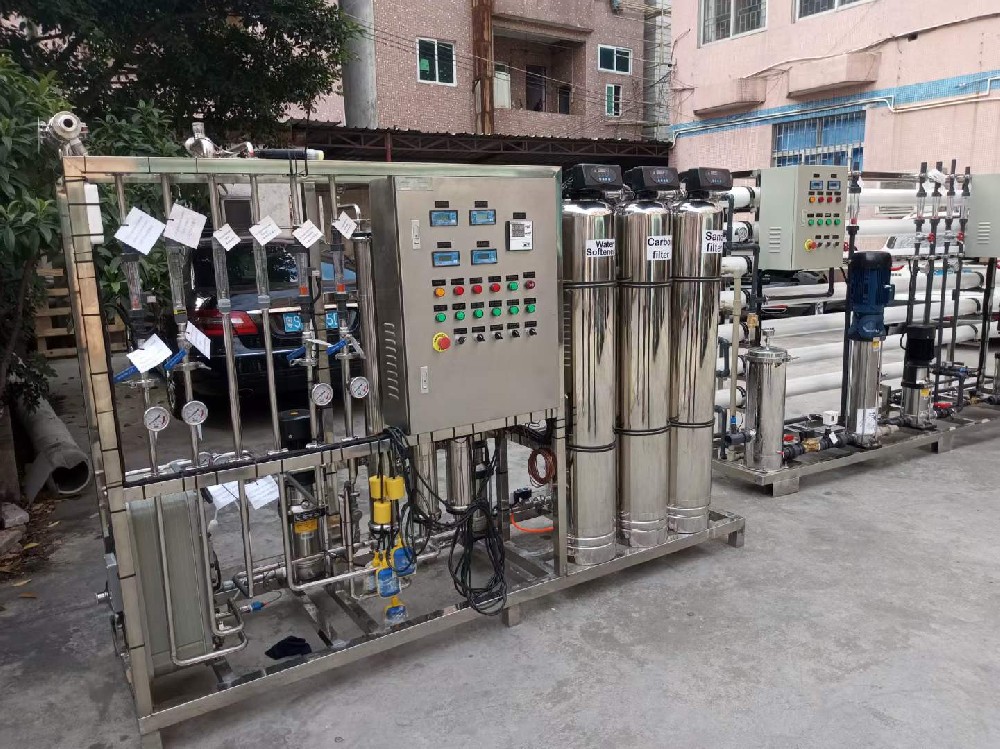
Wechat/Whatsapp:
+8613798883773

Wechat/Whatsapp:
+8613798883773
HYWATER Reverse Osmosis plant/system


Precautions for reverse osmosis equipment During the operation of reverse osmosis equipment, the higher the salt content of the inlet water, the higher the osmotic pressure. The salt permeability is proportional to the salt concentration difference between the front and back of the reverse osmosis membrane. The higher the salt content of the feed water, the greater the concentration difference; therefore, the salt content of the feed water is different, the operating pressure of the equipment and the conductivity of the produced water are also different. Although the pH of the feed water water has almost no effect on the amount of water produced, it has a certain impact on the salt rejection rate. Because the reverse osmosis equipment membrane itself has some active groups, the pH value will affect the electric field on the membrane surface of the reverse osmosis equipment and affect the migration of ions. For example, the rejection rate for organics will decrease as the pH value decreases. Under the condition that the total feed water flow rate is kept constant, the recovery rate will increase, and the concentrated water flow rate on the high pressure side of the reverse osmosis equipment will decrease; even if the recovery rate changes very little, such as 1%, the total pressure difference will change about 0.02MPa. Since the dissolved CO2 in water is greatly affected by the pH value, when the pH value is low, it exists in the form of gaseous CO 2 and easily penetrates the reverse osmosis membrane. Therefore, the salt rejection rate is lower when the pH value is low. As the pH increases, gaseous CO 2 is converted For HCO 3-and CO 3 2- ions, the salt rejection rate also gradually increases. When the pH of the feed water is between 7.5 and 8.5, the salt rejection rate reaches the highest. In order to improve the operating performance of the reverse osmosis system, some agents can be added to the inlet water: 1. Add hydrochloric acid (HCl) and sulfuric acid (H2SO4) to the feed water to lower the pH. Sulfuric acid is cheap, will not smoke and corrode surrounding metal components, and the membrane has a higher removal rate of sulfate ions than chloride ions, so sulfuric acid is more commonly used than hydrochloric acid. The primary purpose of lowering pH is to reduce calcium carbonate in RO concentrated water. The tendency of scaling, that is, reducing the possibility of calcium carbonate scaling or corrosion; polymer scale inhibitors can also be used to prevent calcium carbonate precipitation. 2. The free chlorine in RO and NF inlet water must be reduced to below 0.05 ppm to meet the requirements of polyamide composite membranes. There are two common pretreatment methods for chlorine removal, granular activated carbon adsorption and the use of reducing agents such as sodium sulfite; in a small-volume system, the use of activated carbon to filter is more cost-effective and can remove organic matter that will cause membrane pollution, but its disadvantage is carbon Feeds that become microorganisms may cause biological contamination of the reverse osmosis membrane. 3. Sodium bisulfite (SBS) is a typical reducing agent for RO systems with larger production volumes. Theoretically speaking, 1.47ppm SBS (or 0.70ppm sodium metabisulfite) can reduce 1.0ppm chlorine. 4. The multi-media filter can remove suspended solids from the water. The multi-media filter uses layered anthracite, quartz sand, finely crushed garnet or other materials as the bed, and the principle is to filter step by step according to the particle size. The following points need to be paid attention to during the operation of the reverse osmosis system: 1. The hydrolysis of the cellulose acetate membrane is likely to cause deterioration of the performance of the reverse osmosis device. Therefore, the pH value of the water must be strictly controlled. The pH value of the feed water must be maintained at 5-6, and the composite membrane can be in the range of the feed water pH 3-11 run. 2. When the injected sodium hypochlorite is insufficient and the free chlorine in the feed water cannot be measured, slime will occur on the membrane module of the reverse osmosis device, and the pressure difference of the reverse osmosis device will increase. However, for composite membranes and polyamide membranes, the amount of free chlorine entering the membrane module must be strictly controlled. Exceeding the specified value will cause the membrane to oxidize and decompose. 3. Excessive inlet water flow will deteriorate the membrane module in advance, so the inlet water flow cannot exceed the design standard value; in addition, the flow of concentrated water should be avoided as far as possible to be less than the design standard value. Operation under the condition of too small concentrated water flow will cause Uneven flow occurs in the pressure vessel of the reverse osmosis device and dirt is deposited on the membrane module due to excessive concentration. 4. Even if the high-pressure pump of the reverse osmosis device is interrupted for a short period of time, the device may malfunction. 5. Pay attention to the use of the precision filter. If there is a sharp drop in the pressure difference, it may be due to the damage of the precision filter element, or the loosening of the tightening screw of the precision filter element, etc. 6. When the pressure difference between the inlet and outlet of the reverse osmosis device exceeds the standard, it indicates that the membrane surface has been contaminated or the feed water flow rate is above the design value. If the pressure difference problem cannot be solved after adjusting the flow rate, the membrane should be cleaned in time. More inquiries related to Reverse osmosis equipment please contact: Mob& Wechat& WhatsApp: (+86)13544774483 Email: sales010@water-sy.com We will provide high-quality, all-round comprehensive professional services for project consulting, system design, manufacturing, installation and commissioning, personnel training, etc
